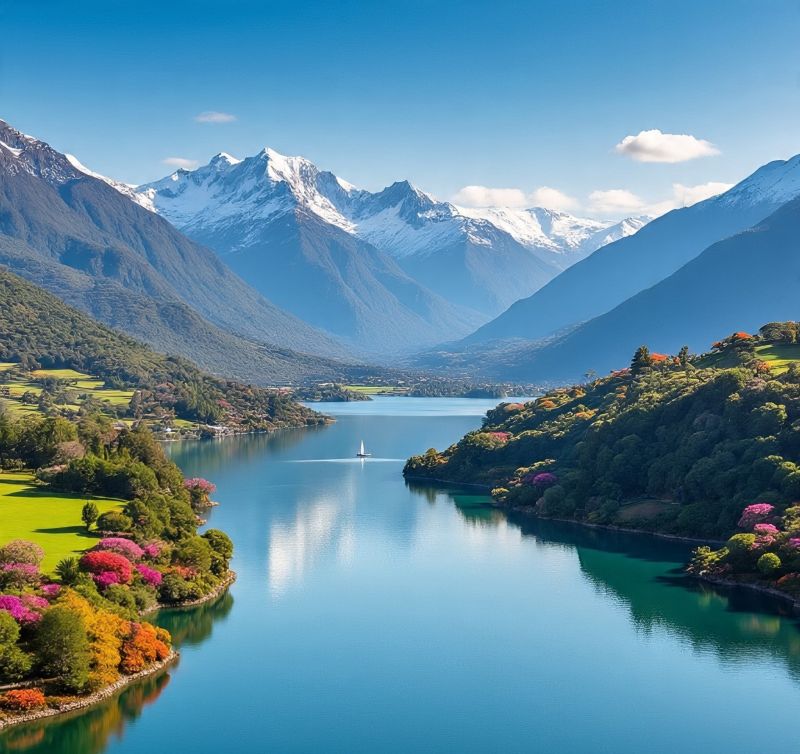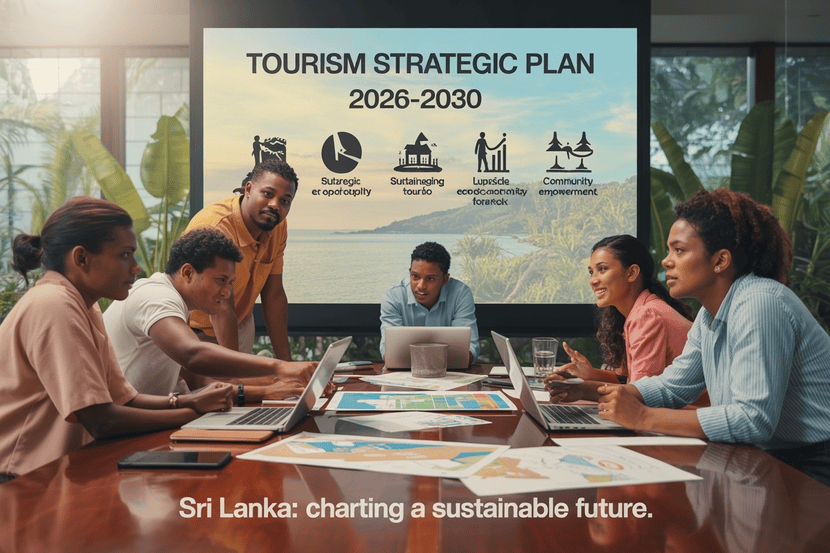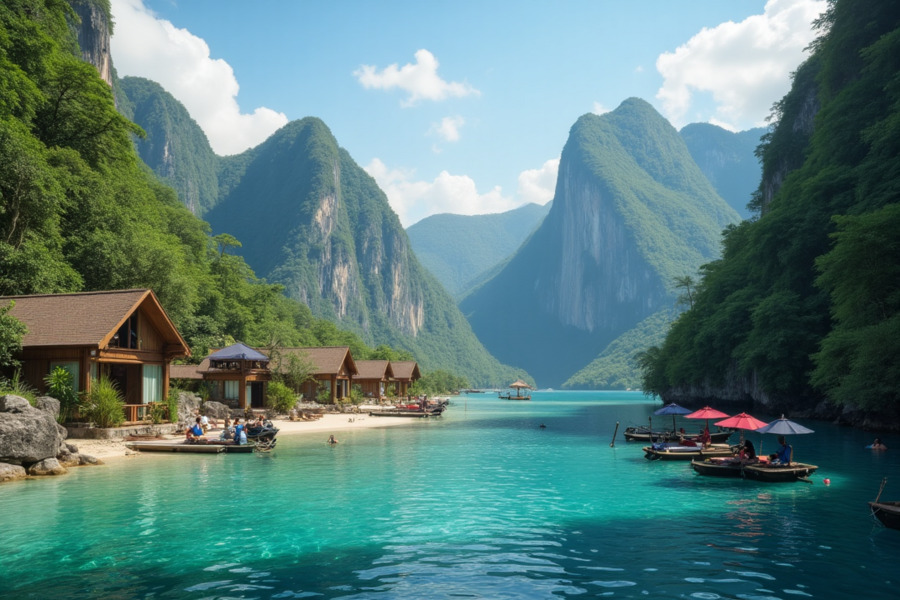≡-Paraguay, Brazil, Chile, Ecuador, and Curaçao Unveiling the Unprecedented Surge in South America’s Tourism Landscape as These Emerging Destinations Lead the Global Travel Revolution, Reshaping Wanderlust Worldwide – Viral of Today
<> Viral of Today <>
Home » America Travel News » Paraguay, Brazil, Chile, Ecuador, and Curaçao Unveiling the Unprecedented Surge in South America’s Tourism Landscape as These Emerging Destinations Lead the Global Travel Revolution, Reshaping Wanderlust Worldwide Monday, July 28, 2025South America’s Rise in Global TourismAs 2025 unfolds, South America has emerged as a leading force in the global tourism sector. New data reveals that this region is experiencing an unexpected surge in international visitors, signaling a fundamental shift in travel preferences. Comparisons of data from the first quarter of 2025 to the same period in 2024 highlight that Paraguay has seen a remarkable 53% increase in tourist arrivals, with Brazil and Chile close behind at 48% each. This suggests that travelers are increasingly drawn to these nations, which have long been overshadowed by their larger counterparts.Other South American countries, including Ecuador and Curaçao, have also seen substantial increases in their visitor numbers, with both countries recording a 17% rise in international arrivals. This overall trend points to a shift in global travel patterns, where lesser-known destinations are gaining traction as more tourists seek authentic and immersive experiences, rather than visiting well-established tourist hubs.The Appeal of Lesser-Known Destinations: A Focus on AuthenticityOnce overlooked by global travelers, Paraguay has now come into the spotlight. The country’s growing appeal can be attributed to its UNESCO-listed Jesuit ruins, the rich biodiversity of Ybycui National Park, and its strong connection to Guaraní Indigenous culture. These elements offer tourists an experience that feels far removed from the typical, mass-market destinations. As travelers are increasingly drawn to destinations with unique historical significance and authentic local cultures, places like Paraguay are benefiting from this cultural shift in travel preferences.This rising interest in Paraguay is indicative of a broader trend in tourism where visitors are seeking more meaningful and immersive experiences. Rather than simply visiting well-known landmarks, today’s travelers are focusing on authenticity, cultural narratives, and a deeper connection with the places they visit. As a result, lesser-explored regions are now being seen as gateways to richer travel experiences, offering a chance to engage with local traditions and hidden gems that were once off the radar.Europe’s Subtle Surge: Northern and Eastern Destinations Gaining PopularityIn contrast to the dramatic changes seen in South America, Europe has experienced a quieter but significant uptick in visitor numbers. Countries in Northern and Eastern Europe, often overshadowed by Western European giants, have seen steady growth in tourism. North Macedonia, for instance, has experienced a 22% rise in international arrivals, with Lithuania and Malta following closely behind with 21% and 19%, respectively. Other countries like Latvia and Finland have also seen growth, with 16% and 15% increases, respectively.These destinations share a common thread: they offer rich cultural experiences and scenic landscapes without the overwhelming crowds typical of more established tourist destinations. As travelers increasingly seek out authentic experiences that are not swarmed by masses of tourists, Northern and Eastern Europe have become more attractive alternatives, offering value, affordability, and cultural depth.Asia-Pacific: Merging Tradition with Technological InnovationThe Asia-Pacific region has also seen impressive growth in tourism, with Vietnam leading the charge with a 30% increase in international visitors. Japan, Palau, and South Korea are not far behind, experiencing increases of 23%, 20%, and 14%, respectively. This growth can largely be attributed to these countries’ ability to offer a blend of modernity and tradition that appeals to a wide range of travelers.In particular, Japan has become a magnet for tourists due to its innovative digital art spaces, futuristic experiences, and traditional sites such as temples and shrines. The street food culture, local festivals, and historic architecture further enrich the travel experience, making Japan especially appealing to younger travelers and digital creators seeking new forms of engagement.The appeal of Palau and South Korea also lies in their ability to merge cutting-edge technology with cultural traditions, offering visitors a multifaceted travel experience that seamlessly combines the old and the new.Middle East and Africa’s Growth: Emerging Destinations Gaining TractionTourism in the Middle East is also on the rise, with Egypt recording a 21% increase in visitor numbers and Iran seeing a 14% growth. This trend suggests that travelers are increasingly interested in regions with historical significance and iconic landmarks that tell the story of ancient civilizations. The appeal of Egypt and Iran lies not only in their cultural richness but also in their historic sites, such as the Pyramids of Giza and the ancient Persian ruins, which continue to attract tourists.Meanwhile, Africa has become another growing tourism hub, with countries like The Gambia and Morocco seeing substantial increases in visitors. The Gambia, for instance, experienced a 48% jump in tourist arrivals, while Morocco saw a 22% increase. These destinations are benefiting from increased interest in authentic cultural experiences and adventure tourism, especially as safety and infrastructure continue to improve in the region.The growth of tourism in the Middle East and Africa signals a shift in how global travelers perceive these regions. What was once considered an off-the-beaten-path destination is now seen as an emerging hotspot for those seeking a unique travel experience.A Long-Term View: Destinations Thriving Beyond Pre-Pandemic LevelsWhile short-term growth is noteworthy, examining the long-term trajectory of global tourism provides a more profound understanding of the evolving travel landscape. When comparing travel figures to 2019—before the pandemic hit—it becomes clear that several countries have not only bounced back but also surpassed their pre-pandemic visitor numbers.For example, Qatar has seen a staggering 158% increase in tourism, likely fueled by global attention during its hosting of the 2022 FIFA World Cup. Albania has also experienced a dramatic rise in popularity, with a 136% increase in visitors, as it becomes an attractive and cost-effective European destination. Saudi Arabia, which only started issuing tourist visas in late 2019, has already achieved 102% growth, further cementing its status as a rising tourism destination. El Salvador posted an impressive 93% increase, showcasing the growing appeal of Central America.Other destinations that have consistently seen growth include Curaçao, Brazil, Malta, Morocco, Egypt, and The Gambia. These destinations are proving that they not only recovered from the pandemic but are thriving, drawing more visitors than ever before.Implications for the Travel Industry: Adapting to New Travel PatternsThe increasing popularity of emerging destinations, alongside the shift towards more authentic, immersive, and technologically-driven travel experiences, has profound implications for the global travel industry. As travelers are now more focused on personalized, meaningful experiences, destinations and tourism operators alike must adapt to these evolving preferences.The rise of social media has played a significant role in shaping travelers’ choices. Platforms like Instagram, TikTok, and YouTube are increasingly dictating which destinations attract attention and gain popularity. This shift in how destinations are discovered means that tourism strategies need to be dynamic, digital, and diverse, catering to the changing desires of today’s global travelers.In practical terms, the industry must prepare for the growth of emerging markets, particularly in regions like South America, Asia-Pacific, and Africa, which are becoming new tourism powerhouses. In doing so, they will need to balance the growing demand for authenticity and sustainability with the influx of visitors, ensuring that local cultures and environments are respected and preserved.A New Era of Travel: More Choices, Greater OpportunitiesFor travelers, these shifts present a broader spectrum of choices and experiences than ever before. As South America, Asia, and parts of Africa rise in popularity, tourists now have the opportunity to explore lesser-known regions and connect with cultures in ways that go beyond the typical tourist trail.Travelers can look forward to:Diverse travel experiences that range from exploring nature and heritage to embracing tech-driven tourism.More equitable tourism, with economic benefits distributed more evenly across regions.Increased opportunities for cultural immersion through visits to authentic, historic sites and interaction with local communities.This ongoing transformation in global travel is fostering a new era of mindful tourism, one that encourages sustainability, economic resilience, and cultural understanding. It’s not just about the destinations people visit—it’s about the impact those travels have on both travelers and the places they explore. The world is evolving, and so is the way we travel.
This information will surprise you!
See also
- Read until the end to discover everything.
- Important information you need to know.
- Interesting facts and helpful tips.
Conclusion
Did you enjoy the news? Keep following us daily!













